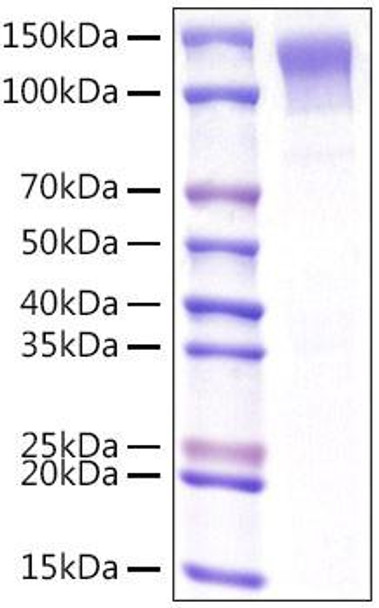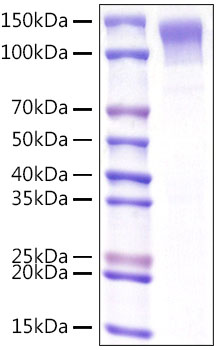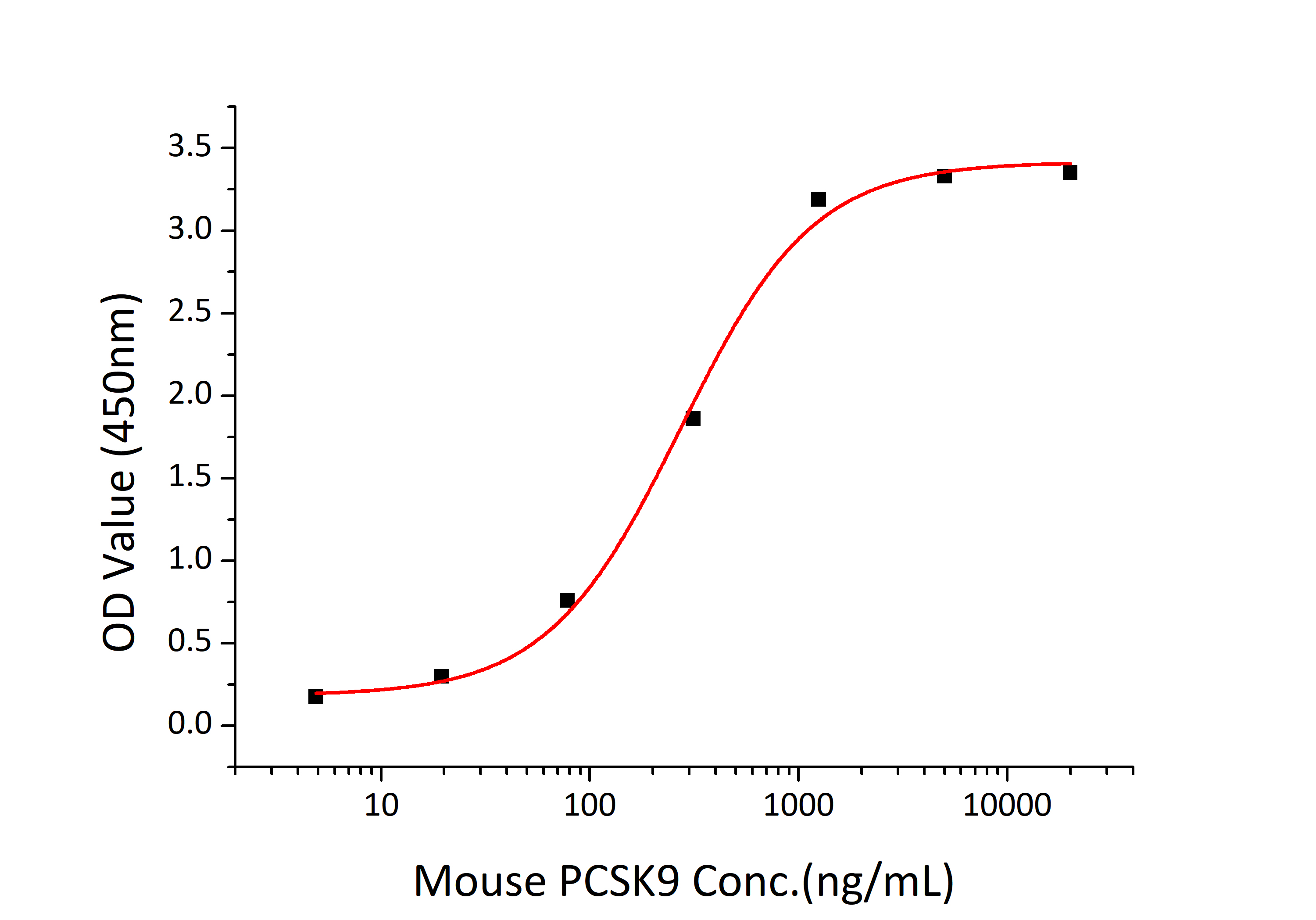Description
Recombinant Mouse Low-density lipoprotein receptor/LDLR Protein
The Recombinant Mouse Low-density lipoprotein receptor/LDLR Protein is a high-quality recombinant protein designed for murine biological research applications. This protein serves as an essential reagent in mouse model studies, comparative immunology research, and preclinical therapeutic evaluations, enabling scientists to investigate Low-density lipoprotein receptor/LDLR biology and its relevance to human disease mechanisms through translational research approaches.
This product (SKU: RPCB1249) is produced using HEK293 cells and features a C-His tag for convenient detection and purification. The protein exhibits a calculated molecular weight of 85.20 kDa with an observed molecular weight of 100-150 kDa under denaturing conditions, achieving ≥ 95 % as determined by SDS-PAGE.. Functional bioactivity has been validated through rigorous quality control assays, confirming its suitability for demanding research applications.
Key Features
| High Purity by Affinity Chromatography | |
| Mammalian & Bacterial Expression Systems | |
| High lot-to-lot consistency via strict QC |
| Product Name: | Recombinant Mouse Low-density lipoprotein receptor/LDLR Protein |
| SKU: | RPCB1249 |
| Size: | 10 μg , 20 μg , 50 μg , 100 μg |
| Reactivity: | Mouse |
| Synonyms: | FH, FHC, LDLR, LDL Receptor, LDLCQ2, LDLR |
| Tag: | C-His |
| Expression Host: | HEK293 cells |
| Calculated MW: | 85.20 kDa |
| Observed MW: | 100-150 kDa |
| Gene ID: | 16835 |
| Protein Description: | High quality, high purity and low endotoxin recombinant Recombinant Mouse Low-density lipoprotein receptor/LDLR Protein (RPCB1249), tested reactivity in HEK293 cells and has been validated in SDS-PAGE.100% guaranteed. |
| Endotoxin: | < 1 EU/μg of the protein by LAL method. |
| Purity: | ≥ 95 % as determined by SDS-PAGE. |
| Formulation: | Lyophilized from a 0.22 μm filtered solution of PBS, pH 7.4. |
| Bio-Activity: | Measured by its binding ability in a functional ELISA. Immobilized Mouse LDLR(RPCB1249) at 5 μg/mL (100 μL/well) can bind Mouse PCSK9(RPCB1031) with a linear range of 4.88-271.36 ng/mL. |
| Reconstitution: | Centrifuge the vial before opening. Reconstitute to a concentration of 0.1-0.5 mg/mL in sterile distilled water. Avoid vortex or vigorously pipetting the protein. For long term storage, it is recommended to add a carrier protein or stablizer (e.g. 0.1% BSA, 5% HSA, 10% FBS or 5% Trehalose), and aliquot the reconstituted protein solution to minimize free-thaw cycles. |
| Storage: | Store at -20℃.Store the lyophilized protein at -20℃ to -80 ℃ up to 1 year from the date of receipt. After reconstitution, the protein solution is stable at -20℃ for 3 months, at 2-8℃ for up to 1 week. |
The low density lipoprotein receptor (LDLR) family consists of cell surface proteins involved in receptor-mediated endocytosis of specific ligands. Low density lipoprotein (LDL) is normally bound at the cell membrane and taken into the cell ending up in lysosomes where the protein is degraded and the cholesterol is made available for repression of microsomal enzyme 3-hydroxy-3-methylglutaryl coenzyme A (HMG CoA) reductase, the rate-limiting step in cholesterol synthesis. At the same time, a reciprocal stimulation of cholesterol ester synthesis takes place. Mutations in LDLR gene lead to the autosomal dominant disorder, familial hypercholesterolemia.








